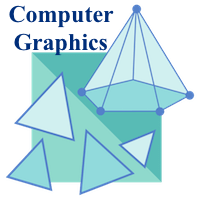Computer Graphics is defined as any sketch or a drawing or a special network that pictorially represents some meaningful information. In most area, computer graphics is an abbreviation of CG and there are several tools used for implementation of Computer Graphics and the basic is the <graphics.h> header file in Turbo-C, Unity for advanced and even OpenGL can be used for it’s Implementation. It was invented in 1960 by great researchers Verne Hudson and William Fetter from Boeing.
It deals with generating images with the aid of computers. Today, It is a core technology in digital photography, film, video games, cell phone and computer displays, and many specialized applications.
Computer Graphics refers to several things:
- The manipulation and the representation of the image or the data in a graphical manner.
- Various technology required for the creation and manipulation.
- Digital synthesis and its manipulation.
Types :
- Raster Graphics: In raster graphics pixels are used for an image to be drawn. It is also known as a bitmap image in which a sequence of image is into smaller pixels. Basically a bitmap indicates a large number of pixels together.
- Vector Graphics: In vector graphics, mathematical formulae are used to draw different types of shapes, lines, objects and so on.
Applications:
- Computer Graphics are used for aided design for engineering and architectural system- These are used in electrical automobile, electro-mechanical, mechanical, electronic devices. For example: gears and bolts.
- Computer Art – MS Paint.
- Presentation Graphics – It is used to summarize financial statistical scientific or economic data. For example- Bar chart, Line chart.
- Entertainment- It is used in motion picture, music video, television gaming.
- Education and training- It is used to understand operations of complex system. It is also used for specialized system such for framing for captains, pilots and so on.
- Visualization- To study trends and patterns. For example- Analyzing satellite photo of earth.





